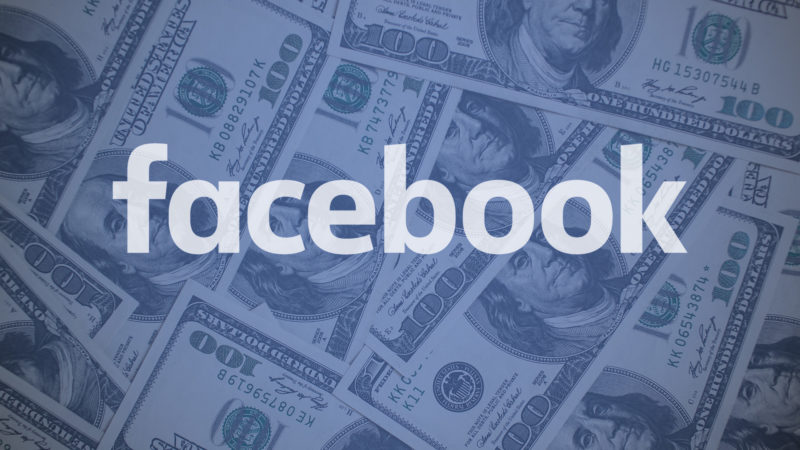Direct-to-consumer advertisers are shifting ad dollars away from Facebook
After seeing a rise in CPMs and a drop in overall ad impressions during recent months, direct-to-consumer advertisers are shifting money away from Facebook.
Direct-to-consumer (DTC) brands are pulling back on their Facebook ad spend, according to a report from Digiday, some shifting as much as 30 percent of their ad spend away from the platform.
After interviewing 10 DTC advertisers, Digiday discovered that all have reduced their Facebook ad spend, citing high CPMs with lower ad impressions in a now overly cluttered News Feed.
“The effectiveness for Facebook has gone down and got particularly bad in late April and early May, which is why we are shifting significant spend,” said, Fabian Seelbach, the SVP of marketing for Curology, a company that sells acne treatments.
Seelbach says his company ended up moving 30 percent of the ad dollars it was spending on Facebook away from the platform after paying 30 to 50 percent more on CPMs at the end of April. The company plans to cut another 30 percent from its Facebook ad budget in the coming weeks.
“We can’t work fast enough to maintain the stability of the pricing,” Seelbach told Digiday.
Part of the money Curology is taking from its Facebook ad budget will go to the Facebook-owned Instagram. According to Seelbach, Instagram Stories CPMs are now half the cost of in-feed Facebook ads.
Because of Facebook’s direct line to the consumer and microtargeting ad capabilities, the platform has long been a boon for direct-to-consumer brands. But in January, the company modified its algorithms to prioritize content over sponsored posts, resulting in what many claim is a much more competitive landscape as Facebook advertisers bid on newly limited ad space in the News Feed.
Brooklinen, another DTC brand interviewed by Digiday, said at one time it was spending up to 75 percent of its total ad budget on Facebook but is now trying to move away as fast as it can after seeing CPMs double over the last year.
“We’re fighting in this little slip of real estate with everyone else out there and it’s hard to cut through,” says Brooklinen founder Rich Fulop in the Digiday report. “You’re paying an impression-based auction so you are essentially bidding against anybody and everybody that wants to compete for that space, so it’s become a hyper-competitive environment.”
The Digiday article references an AdStage report from January showing Facebook CPMs jumped 122 percent after the January News Feed updates, but as Marketing Land reported in March, Facebook’s January News Feed algorithm change cannot definitively be tied to a rise in Facebook’s CPMs.
“Performance advertising on Facebook has been getting more efficient — more clicks at a lower cost — for AdStage customers over the past four months compared to the previous year. Spend increased 111 percent year over year in February. Taken together, these trends look much more attributable to ongoing pressure on ad load in the News Feed and improvements in ad targeting than January’s News Feed change announcement,” writes Marketing Land’s editor, Ginny Marvin in her story covering AdStage’s Facebook CPM data.
In fact, the director of growth marketing and customer acquisition for AdStage told us at the time that overall, the rise in CPMs proved to his agency that Facebook’s ad algorithm is simply that good at finding the best audience to serve ads to.
Still, the DTC brands Digiday talked to have experienced significant lifts in their CPMs on Facebook in recent months. Enough so that, to counter the cost increase, all 10 brands in the Digiday story have moved money away from Facebook, instead turning to out-of-home advertising options like radio and print, and buying TV ad time.
“That’s a trend now — companies are looking for ways to fill the funnel to get people in a retargeting bucket,” Rob Schutz, a co-founder of Roman, a men’s healthcare company, told Digiday. “Especially with TV — you see a lot of brands on the direct-response side spending more money there because it’s an effective channel.”
The CEO of the watch company MVMT, Jake Kassan, echoed Schutz’s comments, saying the barrier to entry for DTC advertisers trying to build their brand on Facebook is more difficult than it has ever been. MVMT is another DTC advertiser that has dropped its Facebook ad budget to 30 percent of its overall ad spend, which includes direct mail, podcasts, radio and TV.
As brands begin shifting more ad dollars to non-digital alternatives, it’s clear they are leaving behind more than the exposure offered by Facebook.
“It’s hard to know who’s seen a billboard or how it’s performing,” Fulop tells Digiday. “That’s one thing companies don’t have to worry about with Facebook. You know exactly what you’re going to get back. Good or bad, you’re going to measure it.”
Contributing authors are invited to create content for MarTech and are chosen for their expertise and contribution to the martech community. Our contributors work under the oversight of the editorial staff and contributions are checked for quality and relevance to our readers. The opinions they express are their own.
Related stories
New on MarTech
